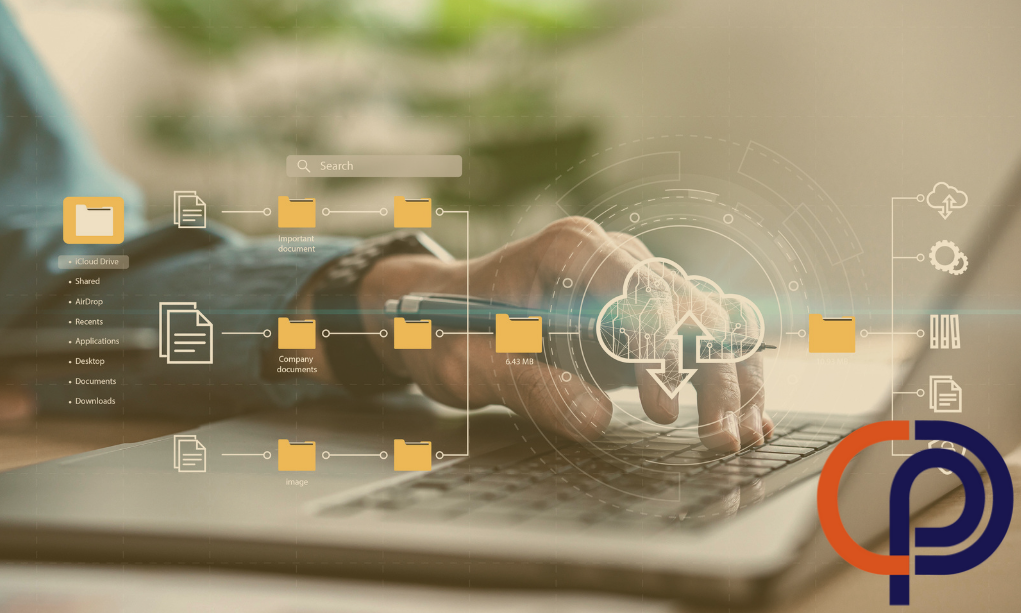What is Continuous Data Protection?
Continuous Data Protection (CDP) is a backup and recovery technology that continuously captures and saves every change made to a file or database. Implementing CDP can help businesses improve their data backup and recovery capabilities, reduce the risk of data loss, and improve business continuity during a disaster. Unlike traditional backup methods, which typically create full backups at scheduled intervals, CDP creates a continuous backup that captures each file modification. This means that in the event of a data loss or corruption, the system can be restored to any point in time, not just the most recent backup.
CDP is particularly useful for organizations that require real-time access to data or cannot tolerate data loss, such as financial institutions or healthcare providers. It can also be used to protect critical business applications or databases, as well as virtual machines and cloud environments.

What are some key benefits of Continuous Data Protection?
One of the key benefits of CDP is its ability to minimize data loss. Since changes are captured continuously, even if a disaster occurs just minutes after the last backup, there will still be a copy of the data that is only a few minutes old. This can significantly reduce the amount of data that is lost and the time it takes to recover from a disaster or data loss event. Another benefit of CDP is its ability to improve recovery time objectives (RTOs). Since CDP captures every change made to data, it can restore data to any point in time, significantly reducing the time it takes to recover from a disaster.
CDP also allows for more flexible recovery options. Instead of being limited to recovering from the most recent backup, CDP allows administrators to recover from any point in time. This can be particularly useful in situations where data corruption or loss may have occurred several days or even weeks ago.
CDP can also be used to protect against cyber-attacks such as ransomware. Because CDP creates a backup of every change, it is possible to roll back the data to a point before the ransomware attack occurred, effectively negating the attack and preventing data loss.
Furthermore, CDP meets many regulatory compliance needs. Certain industries may have regulations that require businesses to maintain a certain level of data backup and recovery capabilities. CDP can help organizations meet these requirements and avoid potential penalties.
Overall, continuous data protection is a valuable technology for organizations that must ensure critical data availability and integrity. CDP provides fine-grain restoration options and near-instantaneous recovery in the event of a disaster. It can be particularly valuable for businesses that rely on their data to operate and can help protect against cyber-attacks and data loss. Its ability to capture changes in real-time and offer flexible recovery options make it an ideal solution for those requiring the highest data protection levels.

What are some drawbacks of continuous Data Protection?
While continuous data protection offers many benefits, there are some drawbacks to consider before implementing it. One of the main concerns is cost. CDP can be more expensive than traditional backup methods, as it requires additional hardware and software to support the real-time backup and storage of data.
Another potential issue is the storage requirements. The continuous backup of data can require a significant amount of storage space, which may be a concern for businesses with limited storage capacity.
CDP also requires constant communication between servers, which can increase network traffic and potentially impact network performance. This increased network traffic can cause issues for businesses that rely on their network for critical operations.
Finally, implementing CDP can be complex, and it may require specialized skills and knowledge to set up and manage the system. This complexity can add to the cost and time investment required to implement CDP effectively.
While continuous data protection provides many benefits, including real-time backup, granular recovery, protection against data loss, and faster recovery time, it is important to consider the potential downsides, including cost, storage requirements, increased network traffic, and complexity, before deciding to implement it.

How does Continuous Data Protection compare to Traditional Backup?
When compared to traditional backup methods, continuous data protection offers significant advantages. Traditional backup methods typically involve creating full backups at scheduled intervals, which can result in data loss in the event of a disaster or data corruption occurring between backup intervals.
In contrast, CDP provides a continuous backup that captures each file modification, ensuring that in the event of a data loss or corruption, the system can be restored to any point in time, not just the most recent backup. This means that even if a disaster occurs just minutes after the last backup, there will still be a copy of the data that is only a few minutes old, significantly reducing the amount of data that is lost and the time it takes to recover from a disaster or data loss event.
Moreover, CDP enables granular recovery of data, allowing users to recover data to a specific point in time, which is particularly useful in situations where only a particular file or dataset needs to be restored. Traditional backup methods are usually limited to restoring from the most recent backup, which can result in the loss of valuable data.
Additionally, CDP can protect against data loss due to human error, hardware failure, or natural disasters by providing a recent copy of the data, whereas traditional backup methods may not capture changes made to the data between backups, resulting in data loss.
Finally, CDP provides faster recovery time compared to traditional backup methods since it continuously backs up data, reducing downtime for businesses and enabling them to resume operations more quickly and effectively.
While traditional backup methods have their place, continuous data protection offers several advantages, including real-time backup, granular recovery, protection against data loss, and faster recovery time. This makes it an ideal solution for businesses that require the highest levels of data protection and business continuity.

How can you ensure business continuity and data integrity with continuous data protection?
Continuous data protection is a technology that can help maintain business continuity and data integrity by providing an up to date, always available backup of data. To ensure effective use of CDP, it’s important to determine your recovery point objective (RPO) and recovery time objective (RTO), which will help you understand how much data you can afford to lose and how quickly you need to recover it.
Choosing a CDP solution that meets your RPO and RTO requirements is also crucial. The solution should be compatible with your existing infrastructure and set up to continuously capture changes to data and back it up to a secure location. Regularly testing the CDP solution is necessary to ensure that it is working as expected, and that you can restore data quickly and easily in the event of a data loss event.
Continuous monitoring and management of the CDP solution will ensure that it meets your RPO and RTO requirements, and that your data is secure. Implementing appropriate security measures to protect data from threats, such as unauthorized access, malware, or ransomware attacks is also essential.
By following these steps, you can ensure that your business can quickly recover from a data loss event and maintain data integrity with continuous data protection.
Learn More about Continuous Data Protection from Professional Computer Concepts
Continuous data protection is an important technology for many Bay Area businesses that require the highest levels of data protection and business continuity. Don’t let data loss or corruption derail your business operations. Implement continuous data protection today to ensure uninterrupted operations. Please don’t hesitate to contact us with any questions you have about continuous data protection, and how it may benefit your business.

